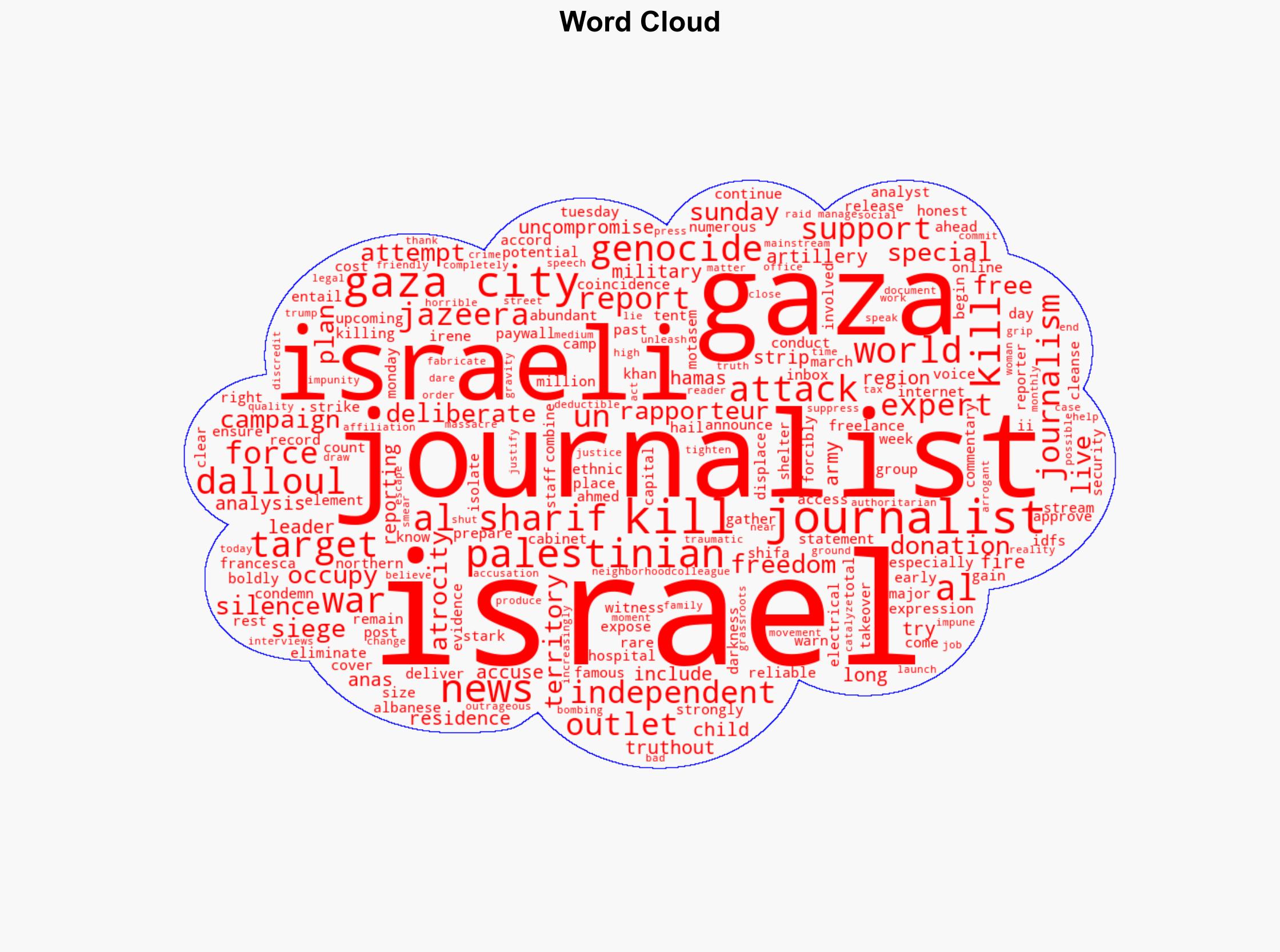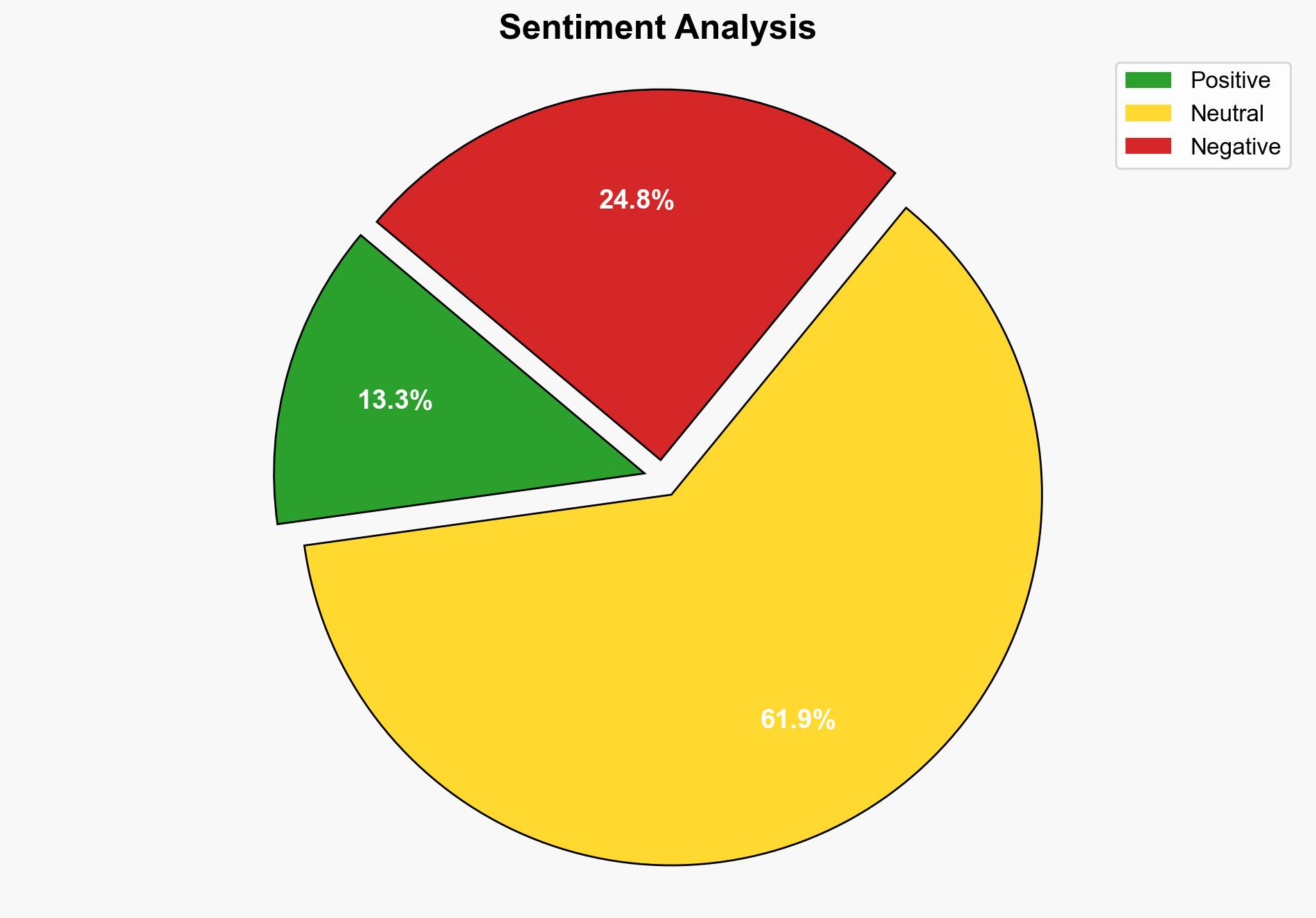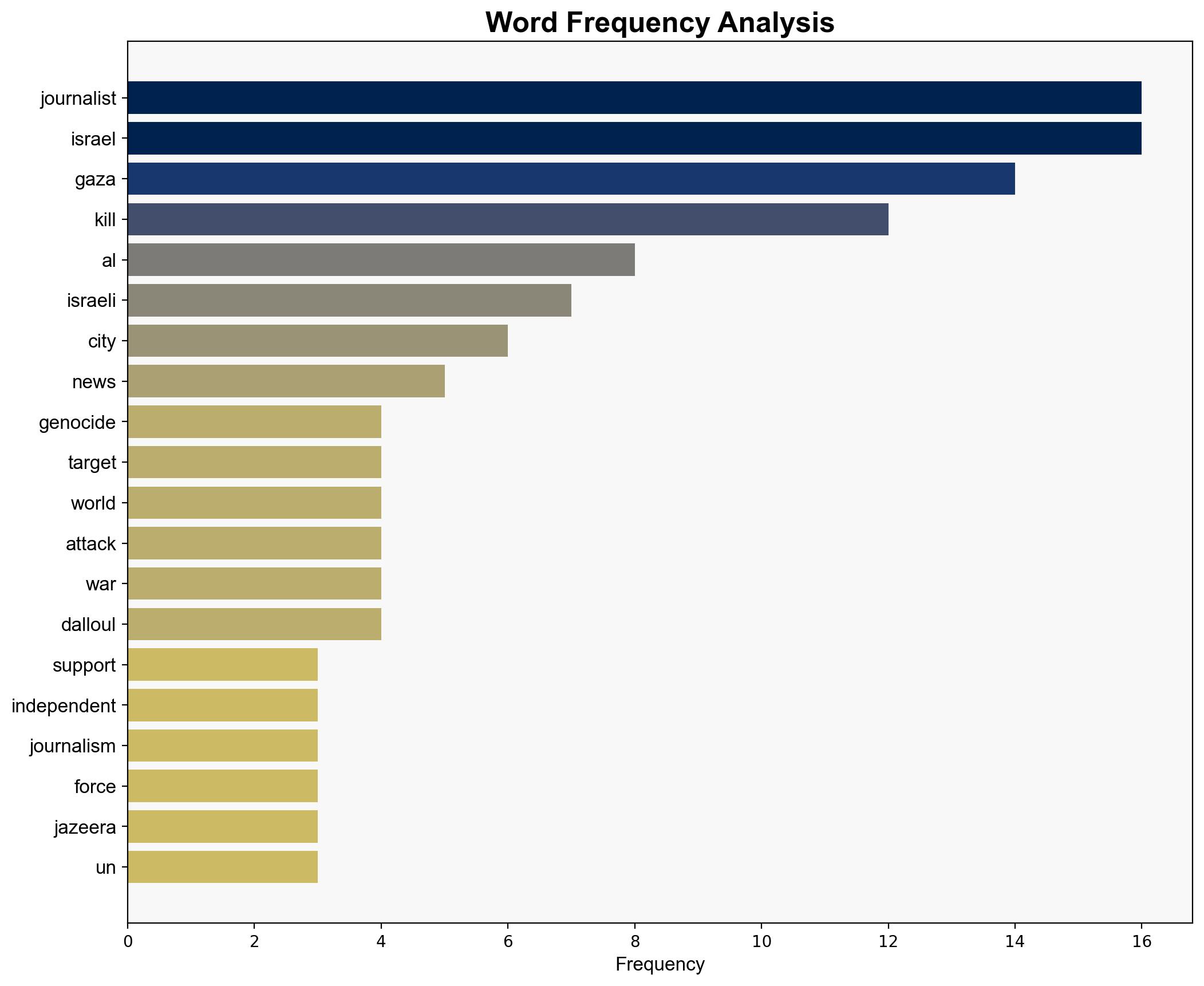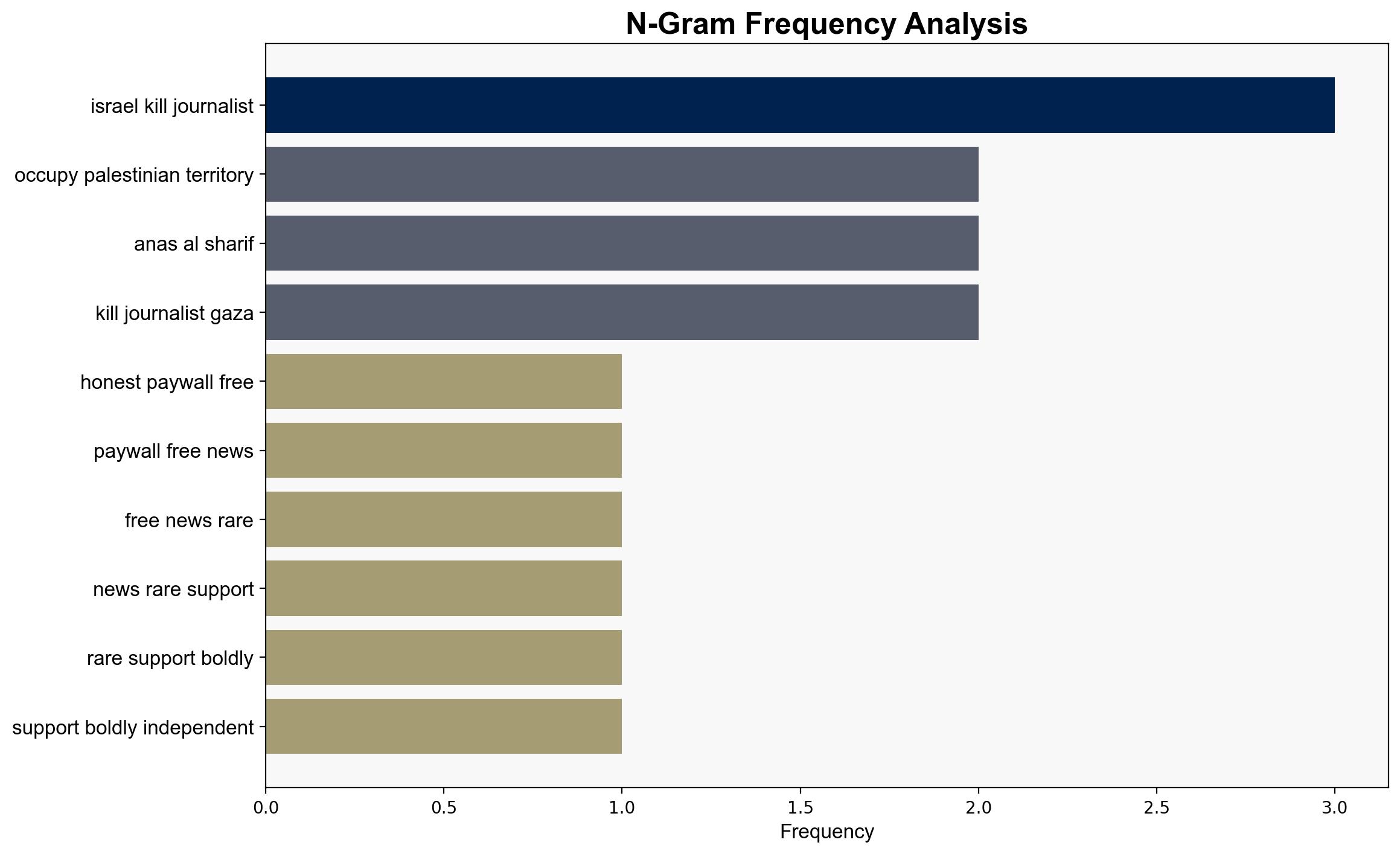Israel Killed Journalists to Ensure Nobody Saw Its Atrocities UN Experts Warn – Truthout
Published on: 2025-08-12
Intelligence Report: Israel Killed Journalists to Ensure Nobody Saw Its Atrocities UN Experts Warn – Truthout
1. BLUF (Bottom Line Up Front)
The most supported hypothesis is that Israel’s actions against journalists in Gaza are part of a deliberate strategy to suppress information about military operations and potential human rights violations. This conclusion is drawn with a moderate confidence level due to the presence of corroborating reports and statements from credible sources, including UN experts. Recommended action includes increased monitoring and documentation of the situation by international bodies to ensure accountability and transparency.
2. Competing Hypotheses
1. **Hypothesis A**: Israel is deliberately targeting journalists to suppress information about its military operations and potential human rights violations in Gaza. This is supported by the pattern of attacks on journalists, statements from UN experts, and historical context of similar actions.
2. **Hypothesis B**: The targeting of journalists is incidental, resulting from the chaotic nature of military operations in a densely populated conflict zone. This hypothesis considers the possibility of misidentification or collateral damage during military engagements.
Using the Analysis of Competing Hypotheses (ACH) 2.0, Hypothesis A is more strongly supported due to the consistency of evidence and expert testimony pointing towards intentionality.
3. Key Assumptions and Red Flags
– **Assumptions**: Hypothesis A assumes a high level of coordination and intent within Israeli military operations to target journalists specifically. Hypothesis B assumes a lack of control and precision in military operations.
– **Red Flags**: The potential bias in source reporting, especially from outlets with strong political stances, may skew the interpretation of events. The absence of direct evidence linking orders to target journalists is a critical gap.
4. Implications and Strategic Risks
– **Patterns**: Continued targeting of journalists could lead to increased international condemnation and potential sanctions against Israel.
– **Cascading Threats**: Escalation of conflict in Gaza could destabilize the region further, impacting neighboring countries and global geopolitical dynamics.
– **Economic and Cyber Dimensions**: Potential sanctions could affect Israel’s economy, while cyber operations could target both Israeli and Palestinian digital infrastructure.
– **Psychological Impact**: Suppression of information may lead to increased radicalization and recruitment by extremist groups.
5. Recommendations and Outlook
- **Immediate Action**: International bodies should enhance monitoring and reporting mechanisms in Gaza to ensure transparency and accountability.
- **Scenario Projections**:
– **Best Case**: De-escalation of conflict and resumption of peace talks, leading to improved conditions for journalists.
– **Worst Case**: Intensification of conflict with widespread human rights abuses and international isolation of Israel.
– **Most Likely**: Continued tension with sporadic international interventions and limited progress in conflict resolution.
6. Key Individuals and Entities
– **Irene Khan**: UN Special Rapporteur on Freedom of Expression.
– **Francesca Albanese**: UN Special Rapporteur on the Occupied Palestinian Territory.
– **Anas al Sharif**: Journalist reportedly killed in Gaza.
7. Thematic Tags
national security threats, media freedom, human rights, Middle East conflict





